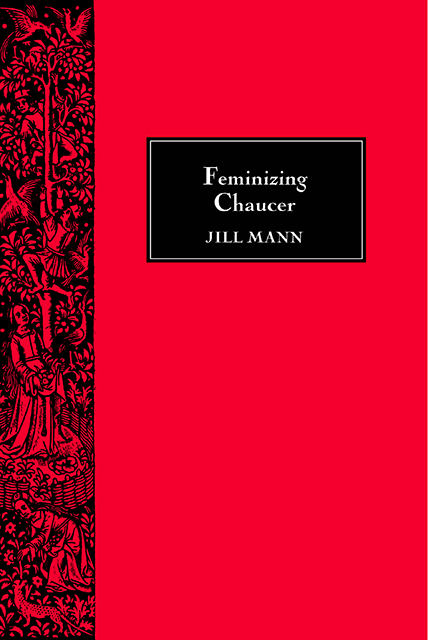Book contents
- Frontmatter
- Contents
- Dedication
- Preface to the 2002 Edition
- Preface
- Abbreviations
- Introduction
- 1 Women and Betrayal
- 2 Antifeminism
- 3 The Surrender of Maistrye
- 4 Suffering Woman, Suffering God
- 5 The Feminized Hero
- Conclusion
- Excursus: Wife-Swapping in Medieval Literature
- Chaucer Studies
- Bibliography
- Index
Conclusion
Published online by Cambridge University Press: 17 March 2023
- Frontmatter
- Contents
- Dedication
- Preface to the 2002 Edition
- Preface
- Abbreviations
- Introduction
- 1 Women and Betrayal
- 2 Antifeminism
- 3 The Surrender of Maistrye
- 4 Suffering Woman, Suffering God
- 5 The Feminized Hero
- Conclusion
- Excursus: Wife-Swapping in Medieval Literature
- Chaucer Studies
- Bibliography
- Index
Summary
Thise been the cokkes wordes, and nat myne;
I kan noon harm of no womman divyne.
(Nun's Priest's Tale 3265–6)The preceding chapters have stressed Chaucer's originality in creating models of both female and male behaviour that erase traditional gender boundaries and dissolve the power-structures on which they rest. But the Canterbury Tales is not entirely lacking in examples of traditional gender roles. We see them above all in the fabliau-tales – in, for example, the miller of the Reeve's Tale, who goes armed to the teeth to impress his ladylike wife with his manly courage.
Ther dorste no wight clepen hire but ‘dame’;
Was noon so hardy that wente by the weye
That with hire dorste rage or ones pleye,
But if he wolde be slayn of Symkyn
With panade, or with knyf, or boidekyn.
For jalous folk ben perilous everemo –
Algate they wolde hire wyves wenden so. (3956–62)
We see these traditional roles likewise in January's pathetic belief that sexual desire is by definition masculine, even when he has to arouse it by laborious artificial means, and that it is the sexual act itself, rather than his own person, that will ‘greetly offende’ his innocent young wife (Merchant's Tale 1829). And again in the marital relationship of the Shipman's Tale, where the merchant buttresses his husbandly authority with the imposing mysteries of the business world, and his wife ripostes with the claims of the kitchen and the dinner-table, where female rule is undisputed (214–38). The comedy in examples such as these is generated precisely from the shrewd observation that identifies the conventionalized nature of these male-female roles – that recognizes roleplay as a constant feature of human behaviour. So that to acknowledge the presence of traditional male-female relationships in these instances is at the same time to acknowledge that they are not represented as ‘natural’ but as a series of learned rituals through which male and female roles are constructed.
The wittiest and most original dramatisation of these traditional relationships is however acted out, not between human beings, but between a couple of chickens. Of all the married couples in the Canterbury Tales, it is Chauntecleer and Pertelote who give us a classic illustration of the distribution of roles in a conventional marriage.
- Type
- Chapter
- Information
- Feminizing Chaucer , pp. 145 - 151Publisher: Boydell & BrewerPrint publication year: 2002



